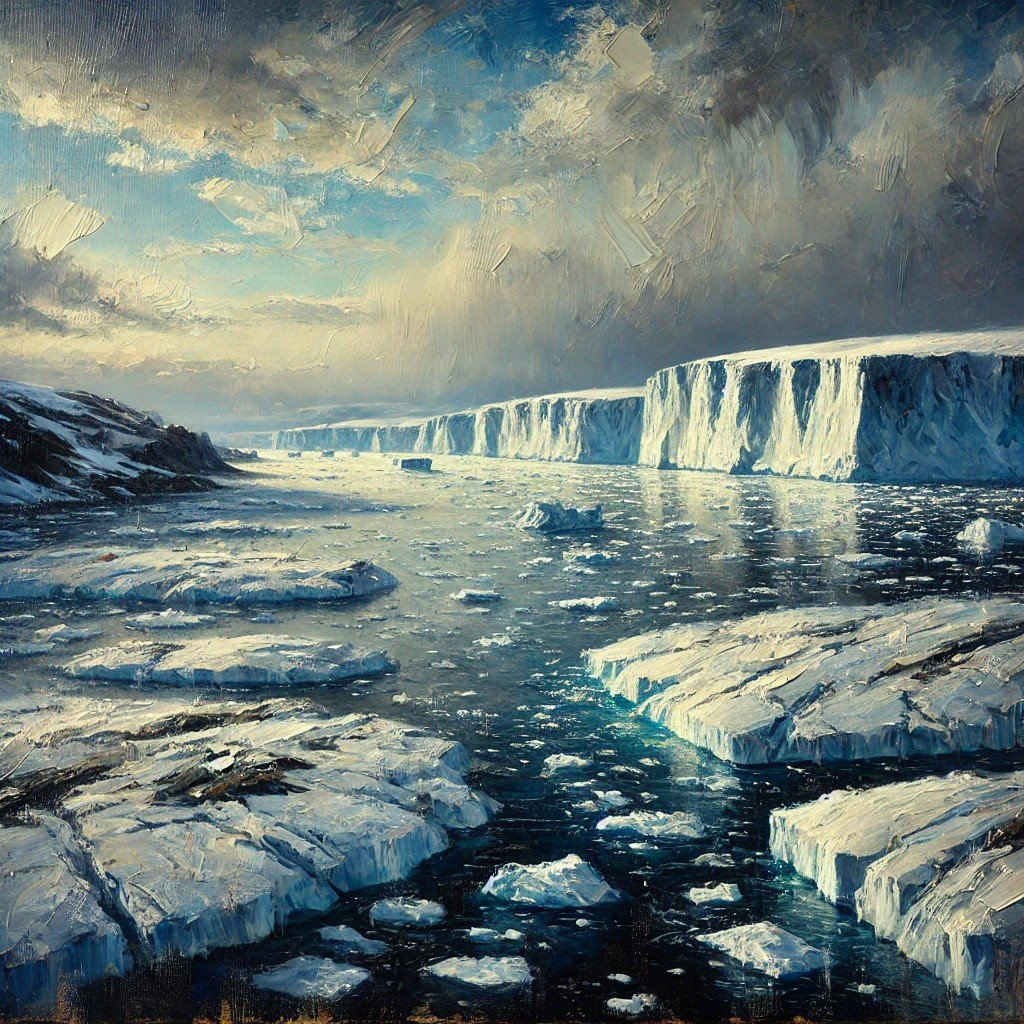Under the ice-line,
where silver-gills drift
and dark fin-shadows
shift like slow suns,
a cold-thin pulse stirs –
tide-skin stretched
into stone-water.
The iron-mirrors hold,
pressing their weight
into the hidden melt
and deep-spread layers
of winter-drift –
a salt-road pulls
the bright heat under,
drawn towards
the shimmering skin.
In unmarked depths
a scatter of warmth
meets ice-bone,
its soft reach lost
in the slow grip of salt-claw –
held close against
a silent
northward
weight.
This poem is inspired by recent research, which has observed warm ocean water moving beneath the Ross Ice Shelf of Antarctica, where it contributes to ice melting.
The movement of warm water beneath Antarctica’s ice shelves can accelerate ice melting and, in turn, contribute to sea level rise. Yet, scientists have only a limited understanding of how this process works or how it changes over time. Warm ocean water, driven by winds and currents, can enter the cavities beneath ice shelves, where it transfers heat to the overlying ice, causing it to melt. To study this, researchers deployed a small, autonomous underwater robot known as a Seaglider in the southern Ross Sea in December 2022. The Seaglider was set up to measure water temperature, salinity, and other properties, aiming to learn more about how warm ocean water interacts with the ice in the nearby Ross Sea polynya, an open area of water surrounded by ice.
However, the Seaglider was unexpectedly carried beneath the Ross Ice Shelf by strong currents, providing a unique opportunity to gather data from beneath the ice. During its journey, it recorded a 50-metre layer of warm, nutrient-rich water. This layer, identified by high chlorophyll, oxygen, and turbidity levels, indicated that it originated in open waters before moving beneath the ice. Remarkably, the Seaglider detected this warm water directly in contact with the ice base, highlighting how surface waters are actively melting the ice from below. This study offers important insights into how ocean currents transport heat under ice shelves, and it provides a new reference for climate models aiming to predict Antarctic ice melt and its effect on rising sea levels.
Discover more from The Poetry of Science
Subscribe to get the latest posts sent to your email.

‘In the slow grip of salt-claw –’
Sam, it paints reality.
Thanks
Thank you Suzanne 😁